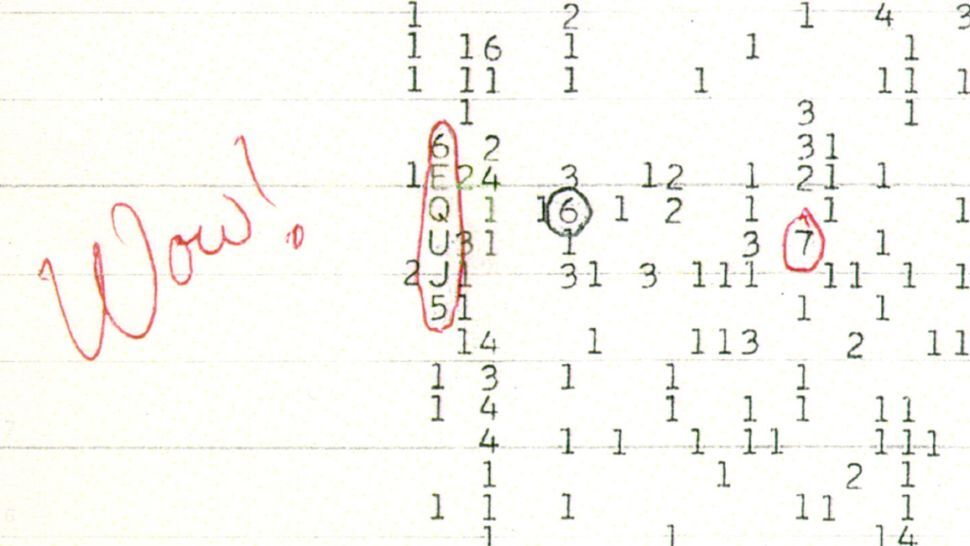9.11.2022
The researchers say there are plenty more stars to look at.

"Wow!" signal printout. The comment on the side inspired the event's name. (Image credit: Big Ear Radio Observatory and North American AstroPhysical Observatory (NAAPO))
Researchers used a pair of telescopes to scan the zone where a purported alien broadcast originated 45 years ago.
While the investigation of the so-called Wow! signal came up empty this time, the research team said the collaboration shows promise in making other searches for intelligent alien life outside of Earth. This will even involve looking at data from the sky-mapping Gaia spacecraft to find more sun-like stars in the region of the signal, project collaborator Wael Farah told Space.com.
"This does not only include the Wow! signal uncertainty region ... but extends to areas on the sky where stellar densities are high, like the galactic center and galactic disc," Farah wrote in an email Monday (Nov. 7).
The targeted zone was around a sun-like star located 1,800 light-years away in the constellation Sagittarius, which was identified as a possible zone for the signal in research published in May. "This is the first time a targeted search for the Wow! signal has been conducted," Karen Perez, graduate student at Columbia University, said in a Sept. 29 release(opens in new tab) about the research, which Perez led. It was conducted by Breakthrough Listen, a program of the Search for Extraterrestrial Intelligence (SETI) Institute.
The Wow! Signal blasted from space via radio on Aug. 15, 1977, but despite its regular pattern during a brief span, no one has found any concrete evidence of a repeat signal in the 45 years since that eventful evening. (The name comes from the word "Wow!" that a researcher scrawled on a printout showing the signal.)
Perez noted the search spurred the first-ever collaboration between two telescopes funded by SETI: the Green Bank Telescope and the Allen Telescope Array. The telescopes made their observations on the same day, on May 21, with Green Bank conducting two 30-minute observations and ATA making six five-minute observations. Their observations also overlapped for almost 10 minutes, SETI said in the statement.
Farah, a postdoctoral researcher working at ATA, said the telescope's large field of view and other capabilities (like placing more search beams in the sky) will allow "many more sources [to] be identified and studied simultaneously with the instrument." In other words, more candidate stars where the signal originated might pop up in future searches of the region.
A paper(opens in new tab) based on the research was published in Research Notes of the American Astronomical Society. Open data about the search is available at this SETI site(opens in new tab).
Quelle: SC
